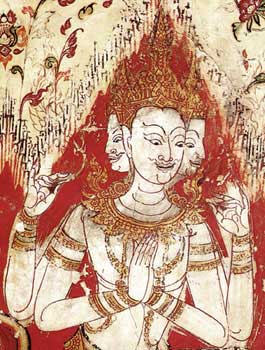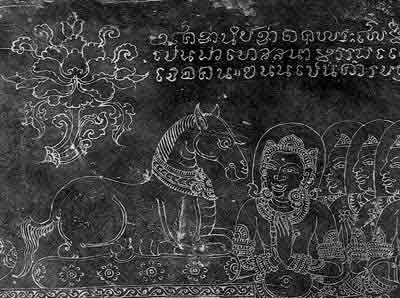|
ภาคภาษาไทย Introduction Sukhothai Buddha Contemporary Art |
|
|
Much of the content inside these works is from the Ramakien, which are Traditional Thai stories of the Buddha's ten past-lives before reaching Enlightenment. The treatment of the subject matter is delicate and supportive. It has landscapes with dramatic mountain scapes and mythological beasts. But it is not without a sense of humor. It is common to have scenes of teenagers fighting, street vendors selling or even lovemaking mixed in with these ancient stories. At times there are historical analogies comparing Thailand's enemies to the armies of Mara dispatched to stop the Buddha from reaching enlightenment.
|
 Traditionally, these works are painted on the inside walls of temples. Many ancient murals have been lost because their nature is temporary. Contemporary artists who have proven their skill are sometimes asked to restore historical and/or respected murals. Works like these have never received recognition in the English art history texts, but have been a vital part of an Eastern art form for at least 600 years.
As more people come to realize that this is an ancient artistic heritage, this important style would be able to be taught in the West. In contemporary western art it would indeed be rare to see the human form depicted with both the gracefulness of Velazquez and the pathos of the ancient Greeks with a highly stylized line and a pervasive, negative space. As western art has pushed itself away from mythology and even the human form, Thai mural painting continues its tradition of respect for beauty and mysticism. - Sam Forkner |
|
Content supervisor & writer: Pakorn Prohmvitak
Site design & writer: Sam Forkner

